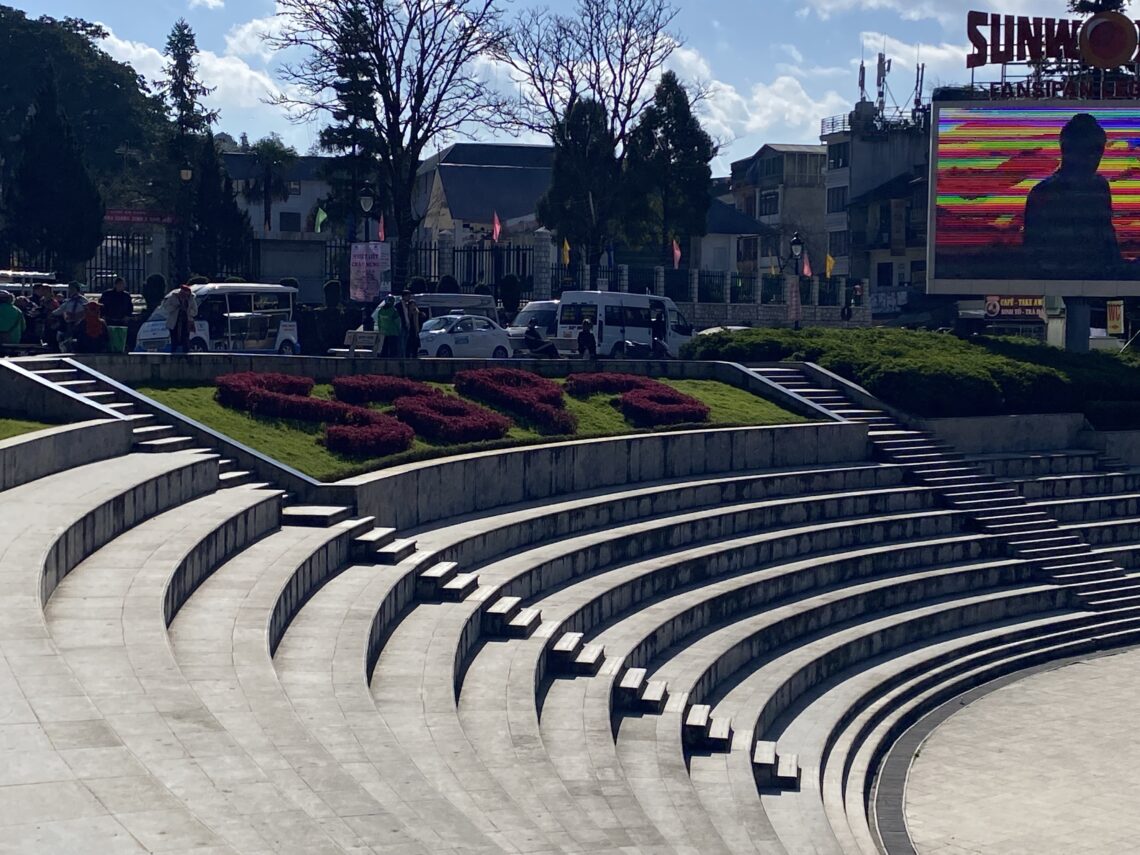
Sapa – Rice Paddy Paradise
From Halong Bay, we took an overnight bus to the far north where the small village of Sapa lies in the middle of the rice farming region. This bus ride was something else. By now, we have taken many bus trips, but this one is full of firsts. It was the first where we were loaded into a random SUV (without any communication on why) to be taken to the bus; the first where we were the only white people; the first in which we stopped nearly every 30 minutes to drop off packages to random people on the side of the road in the middle of nowhere; the first in which the bathroom stop was a bush toilet (we had to ask if we were going to be able to use the bathroom and when we stopped, the driver just pointed down the road to a bunch of bushes); the first in which we were dropped off one hour from our destination (again with no communication); and the first when a second random van picked us up to finish off the trip.
Nevertheless, we eventually made it to Sapa town and found it to be a quaint little village that reminded me a lot of some of the small European towns I have visited.
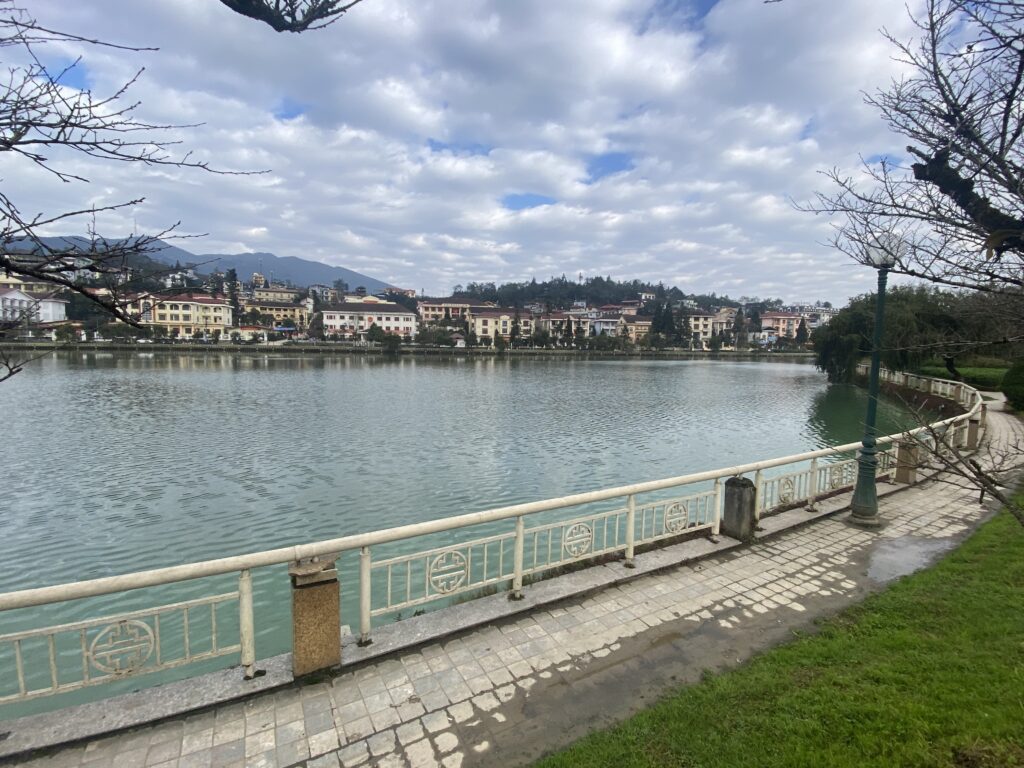
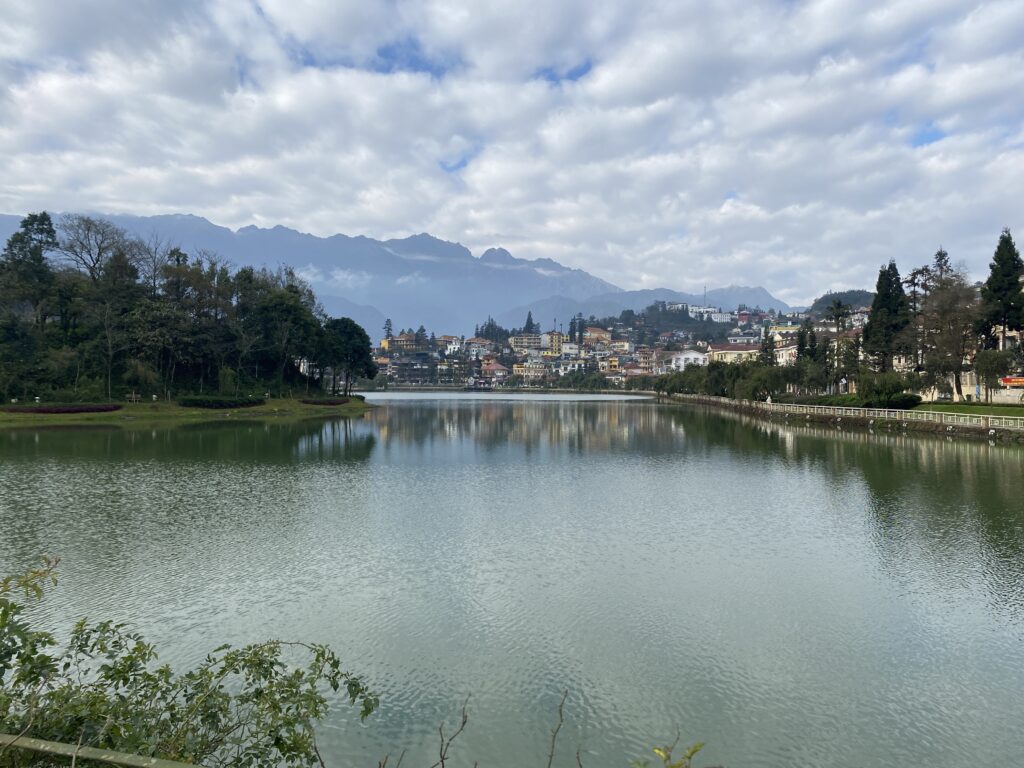
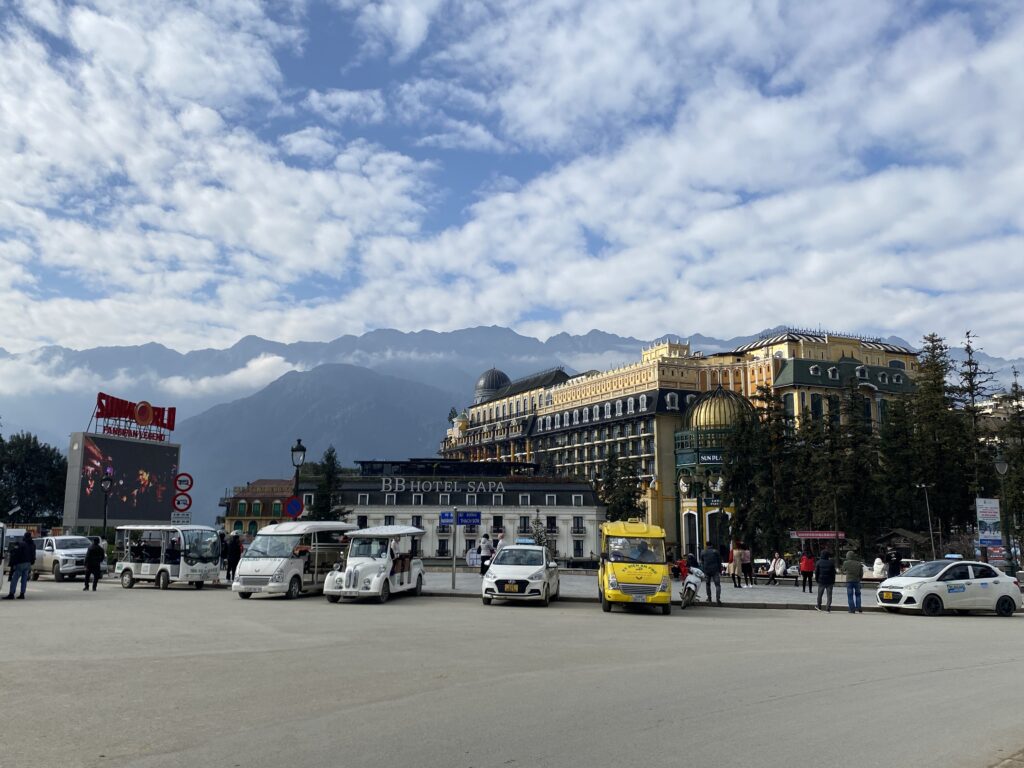
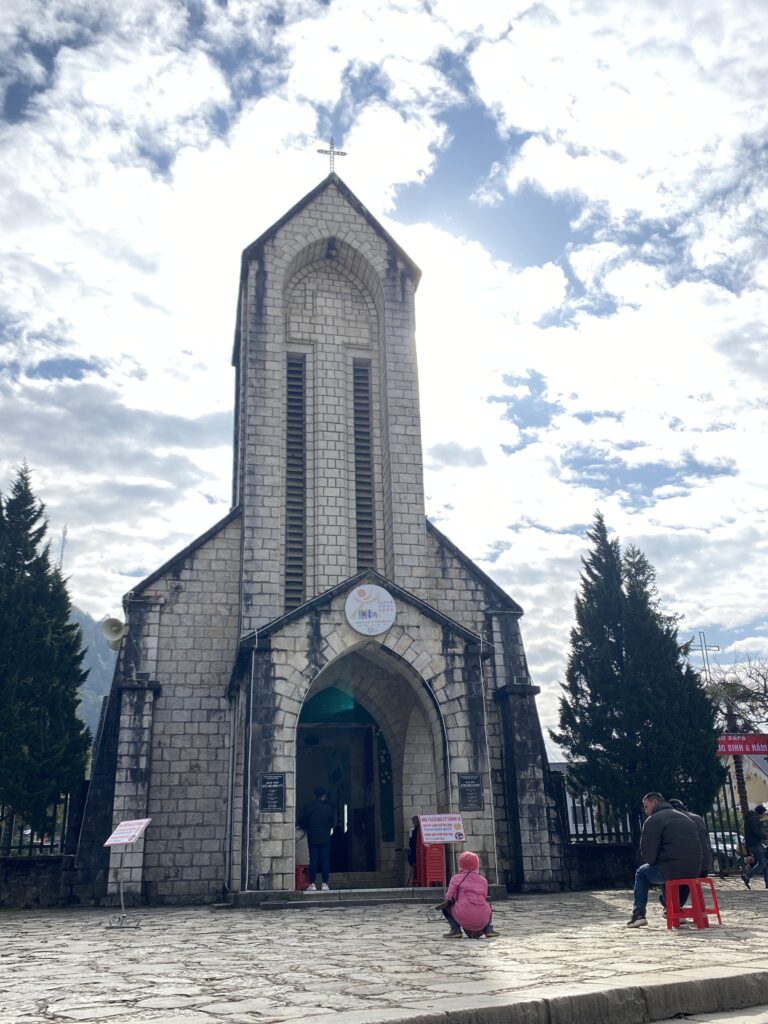
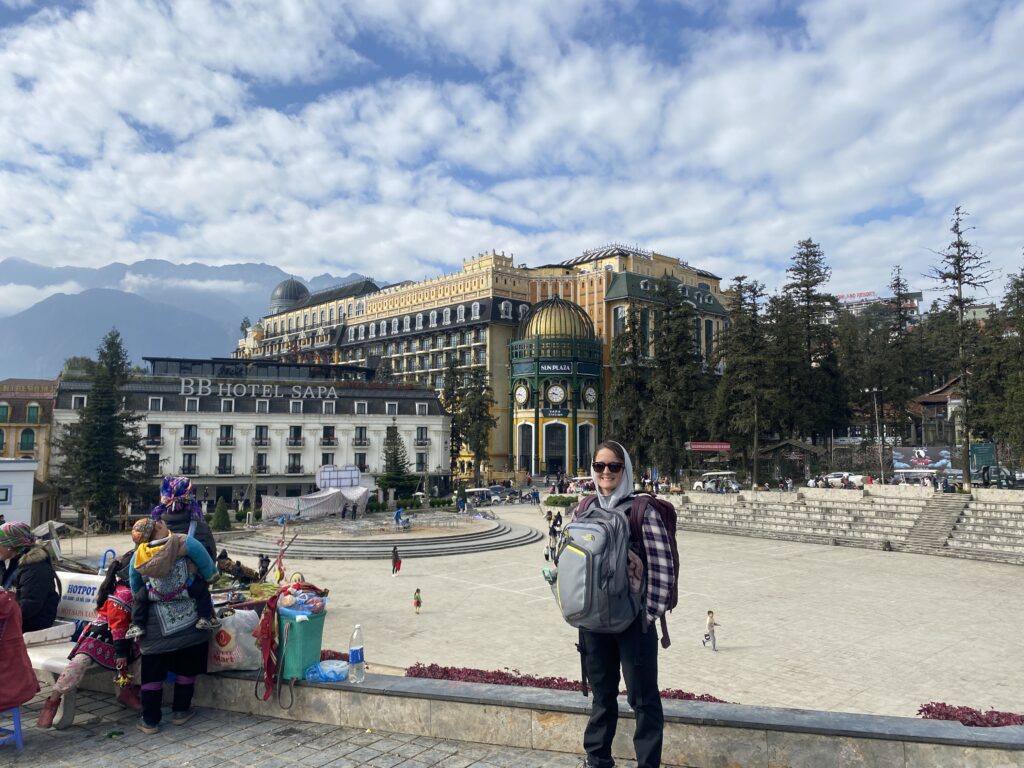
What these pictures do not show you, however, is how freezing cold it was here! I know I say this to people who are sitting in 10 degree weather, but at least you have heaters!
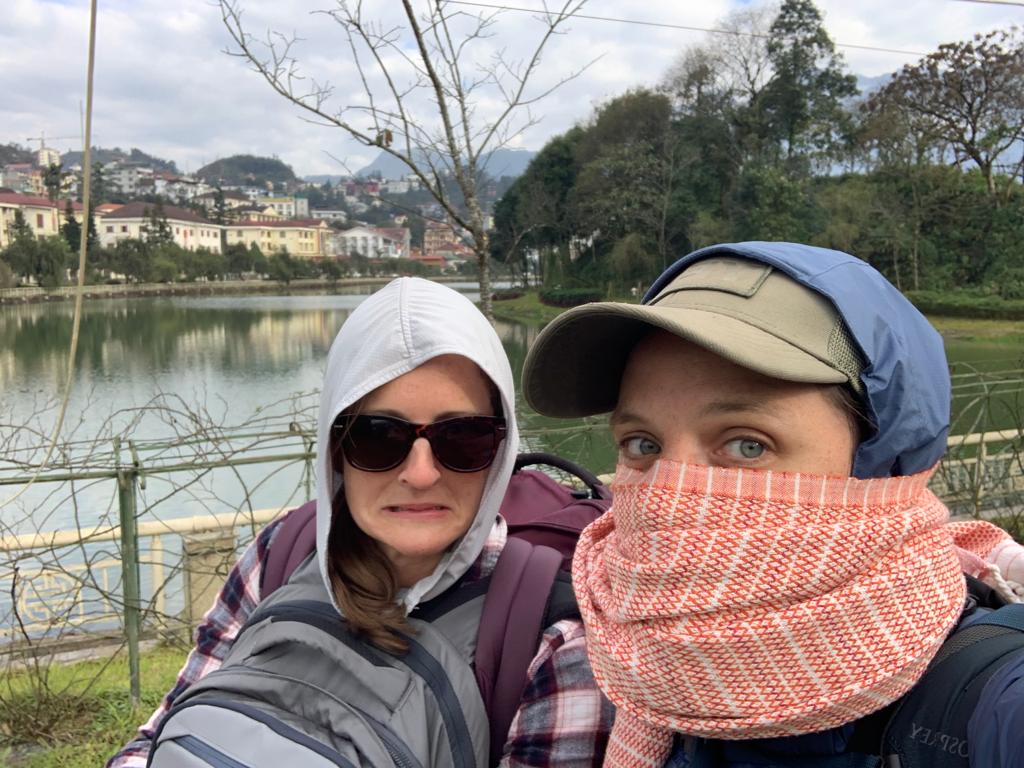
Upon arrival, we even considered leaving after our first night and going to Hanoi early, but I am glad we did not do that because we would have missed out on an amazing experience trekking through the rice terraces and meeting a wonderful, Hmong family.
The family we stayed with lives in a village about 12 km away from the town of Sapa and I am not kidding when I tell you it was in the 30s and there were parts of their home that are open to the outdoors! Needless to say, there was no heating system so our only form of warmth came from the tiny kitchen fire and the pile of blankets on our beds. I wore every layer of warm clothing I had (which wasn’t much!) the entire time we were there!
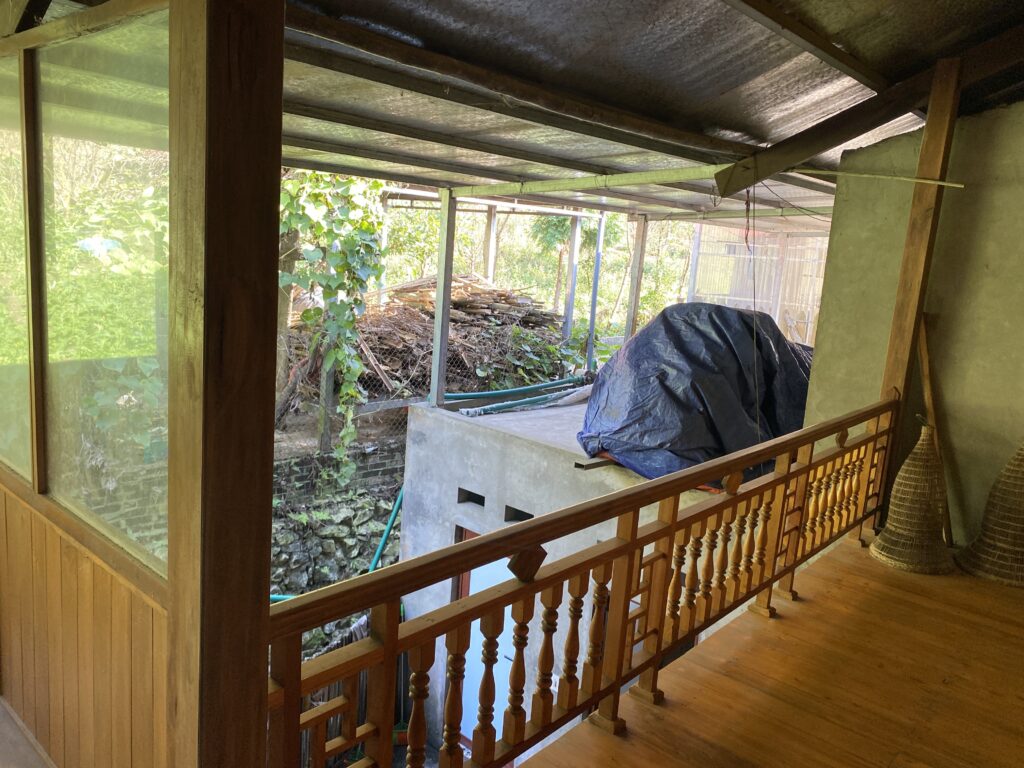
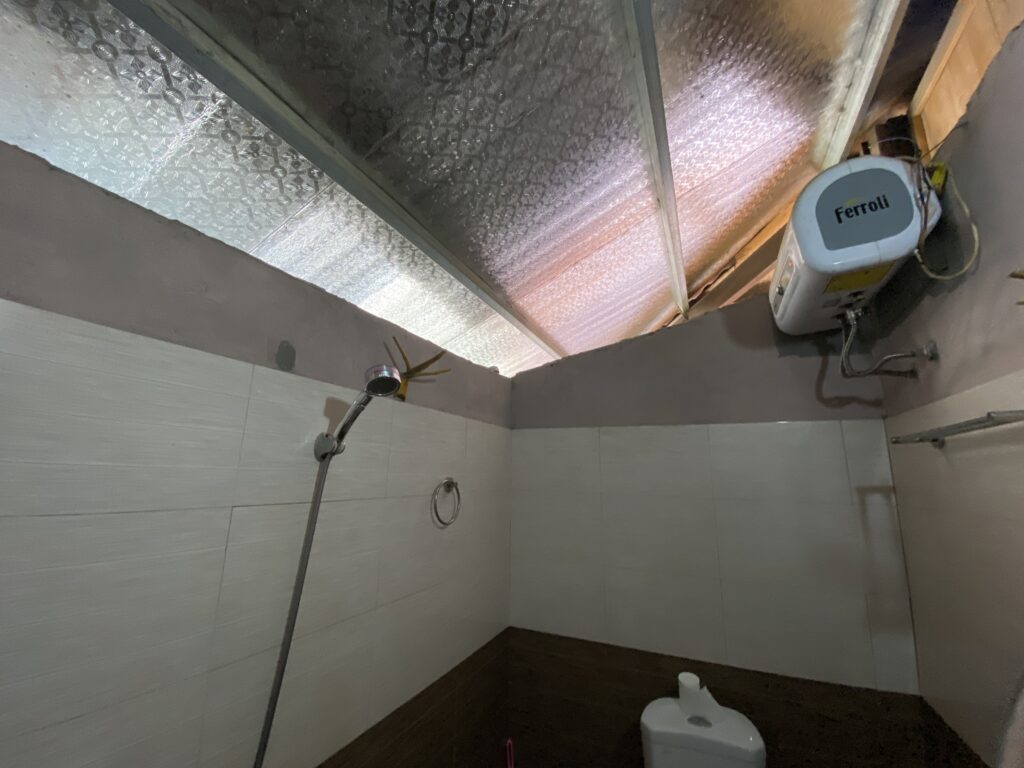
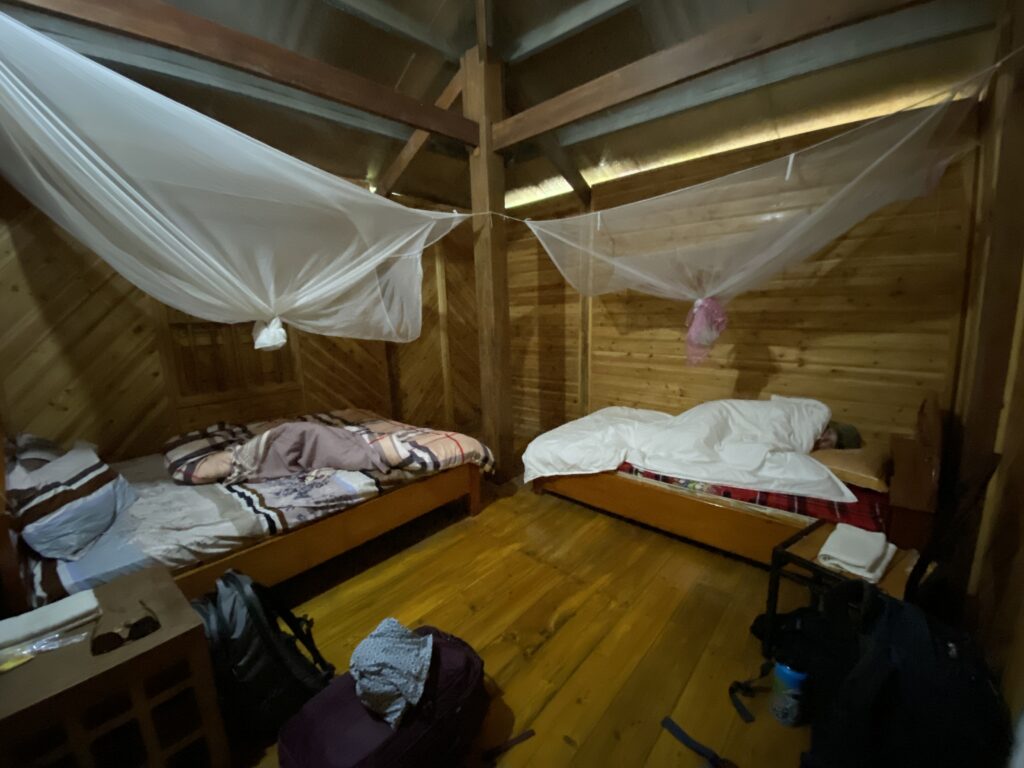
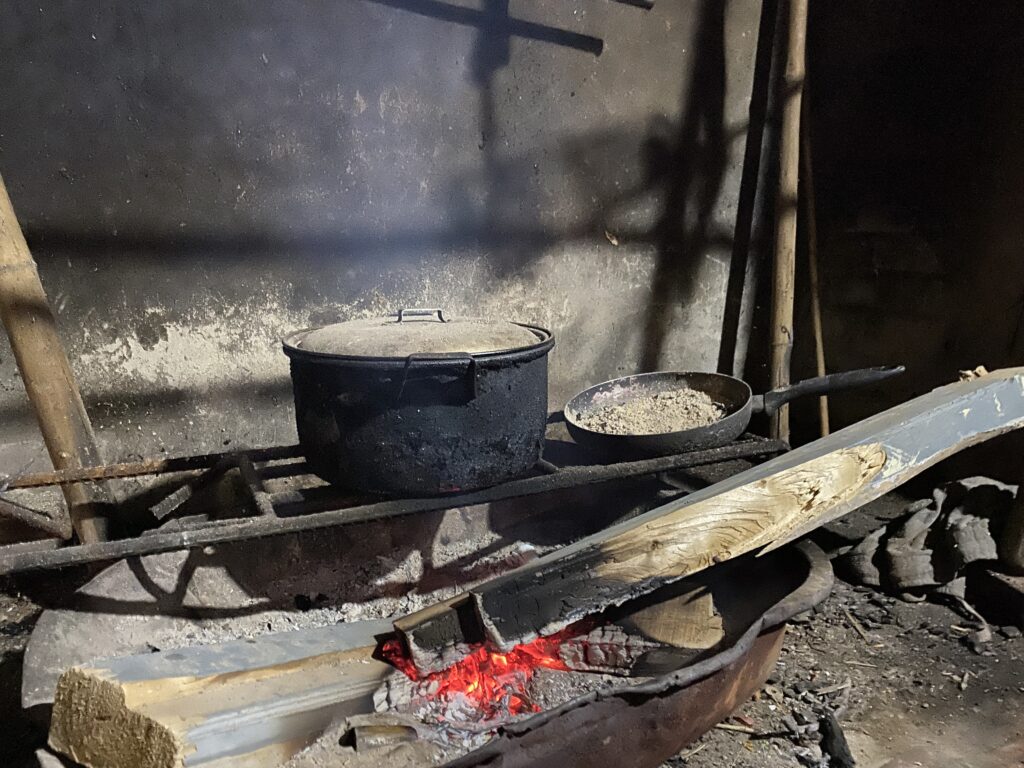
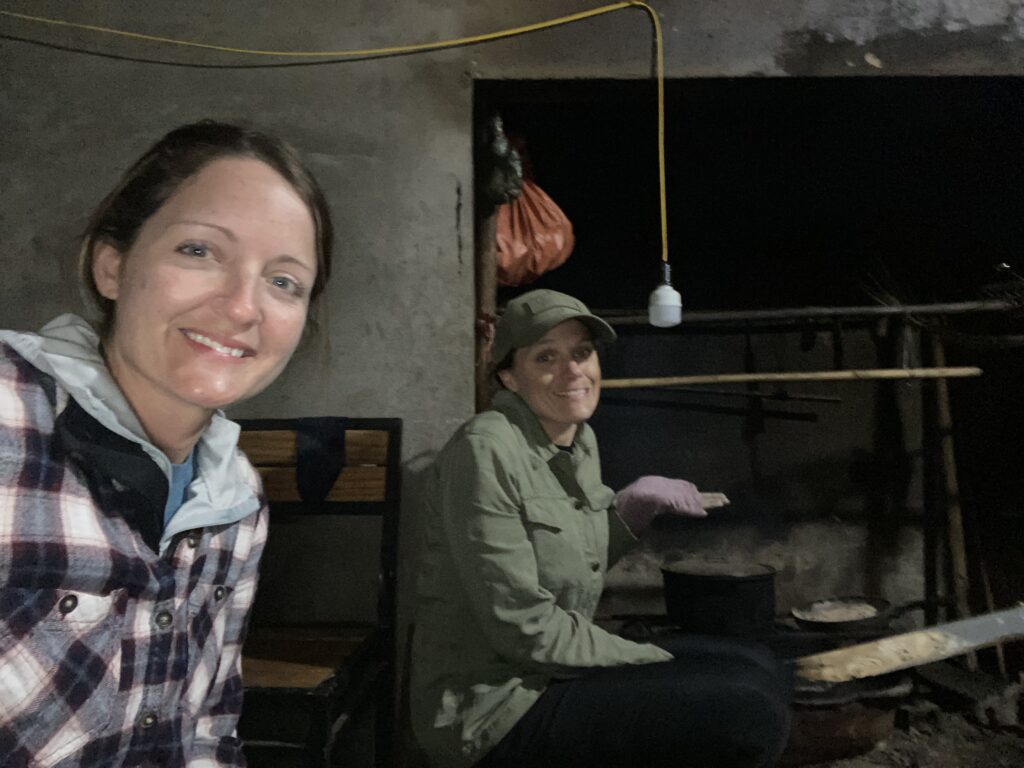
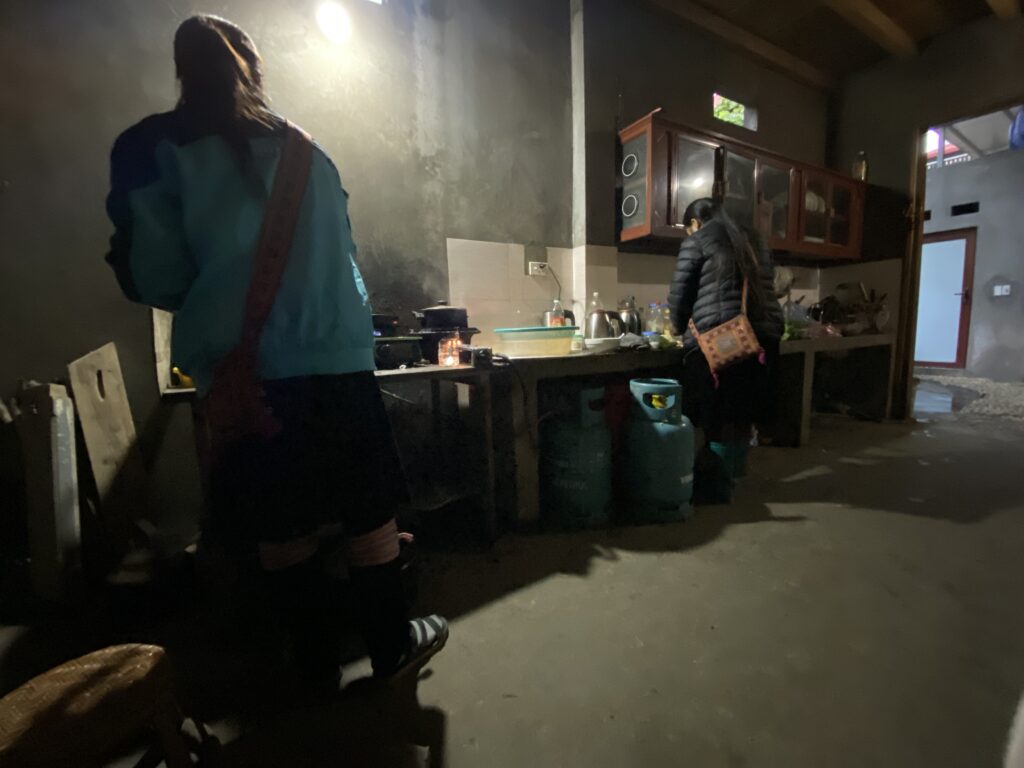
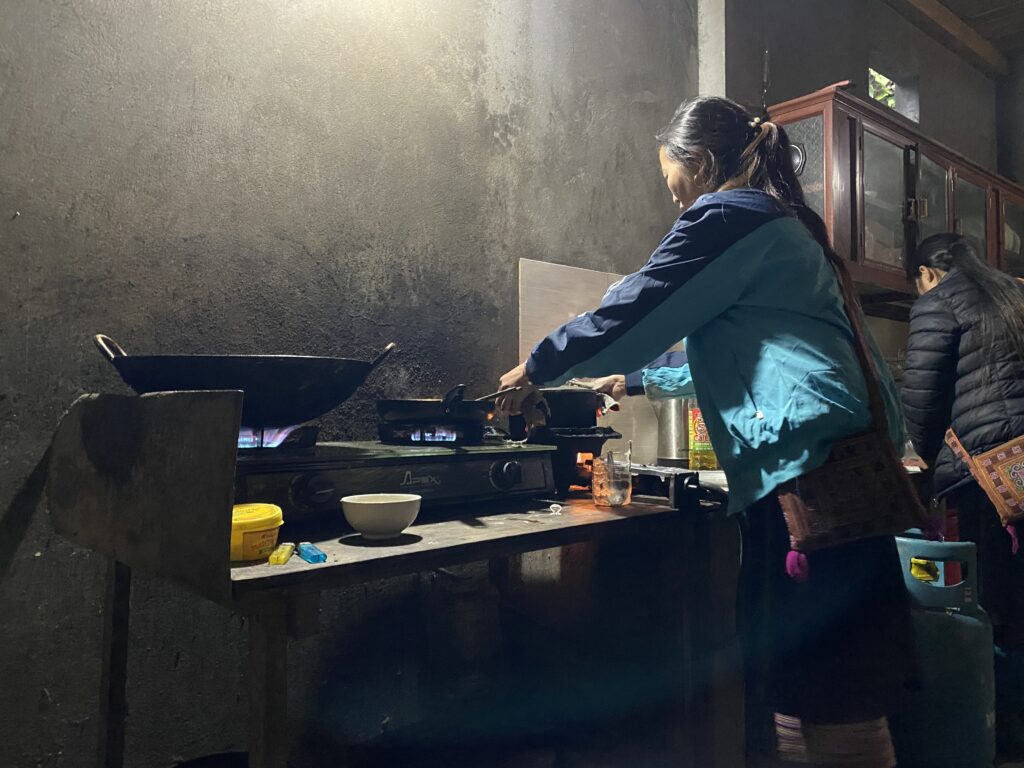

The family invites their guests to join them for dinner in order to experience authentic Hmong food. It was a really cool being able to sit and enjoy a meal with them even though communication was difficult. The bowl with the ladle is filled with rice wine. Dinner isn’t over until the rice wine is gone. There was a lot of ‘cheersing’ as we ate!
Our dinner party included (from the left): Me and Kaitlyn, a German girl who was traveling alone, the man and woman who owned the home, the two ladies who help run the homestay and made our food, and a girl from another part of Vietnam.
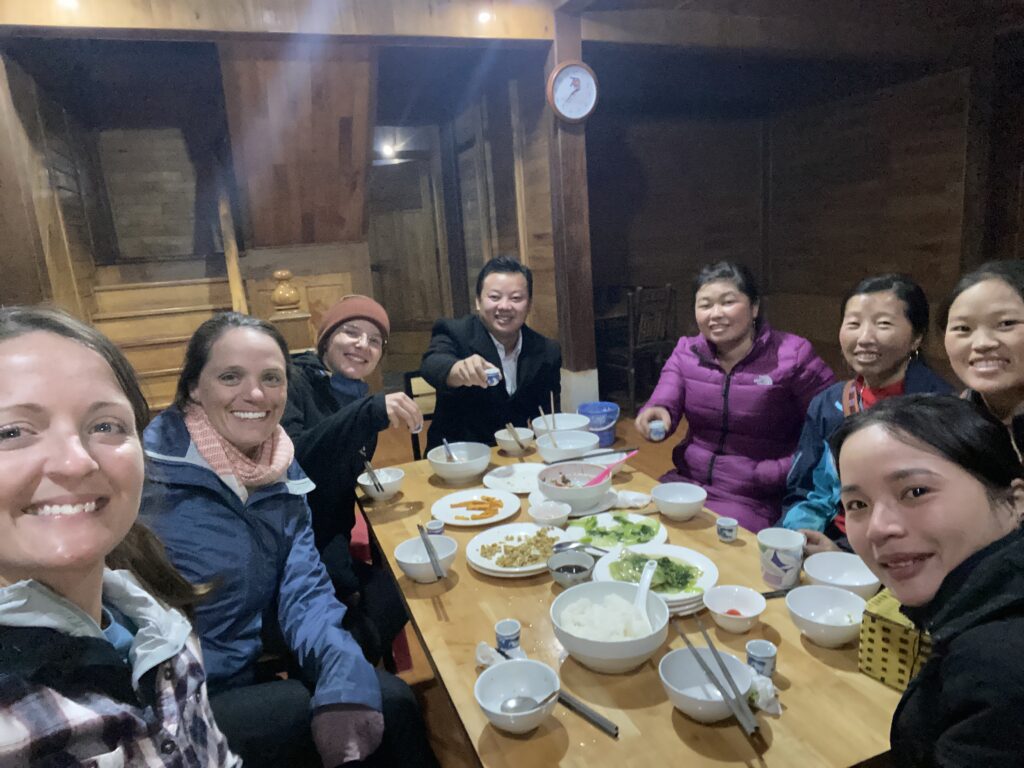
Besides meeting this family, the other highlight of Sapa was the trek through the rice terraces. I have been fascinated by these ever since I started teaching geography and am so glad to have finally had the chance to see them in person. Once again, photos can not do justice to how beautiful the terraces are and they do not capture the labor that has to go into maintaining something like this, year after year. Because it was winter, the terraces were empty but in the summer, the rice is knee high and apparently the whole area is even more amazing to see.
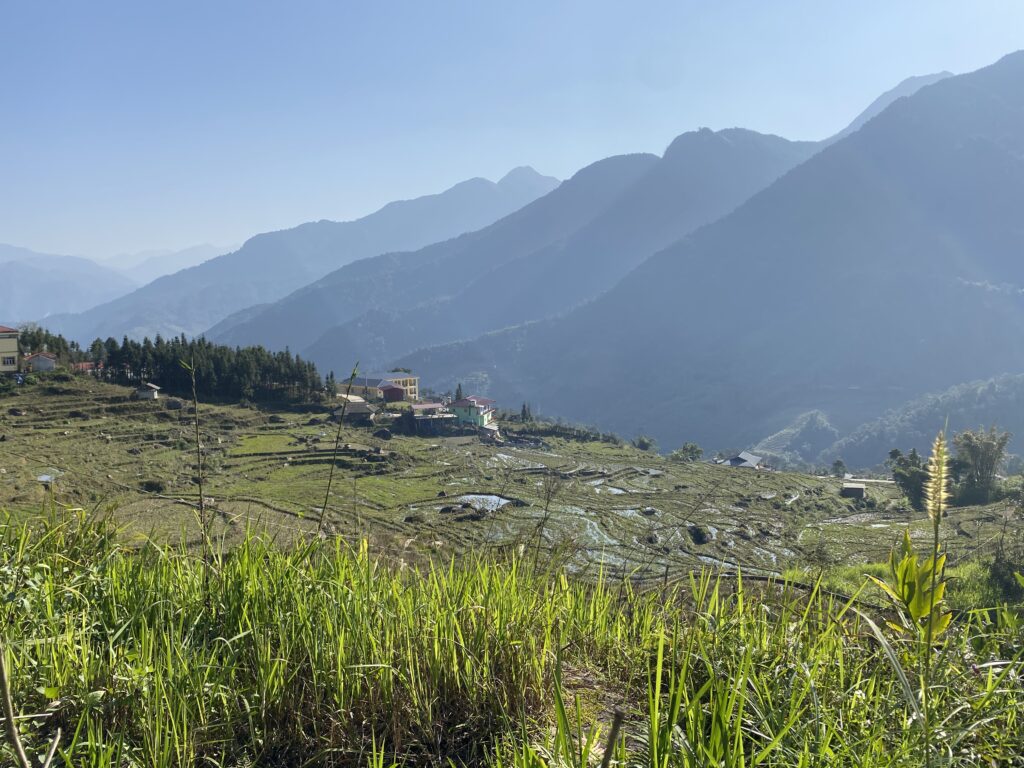
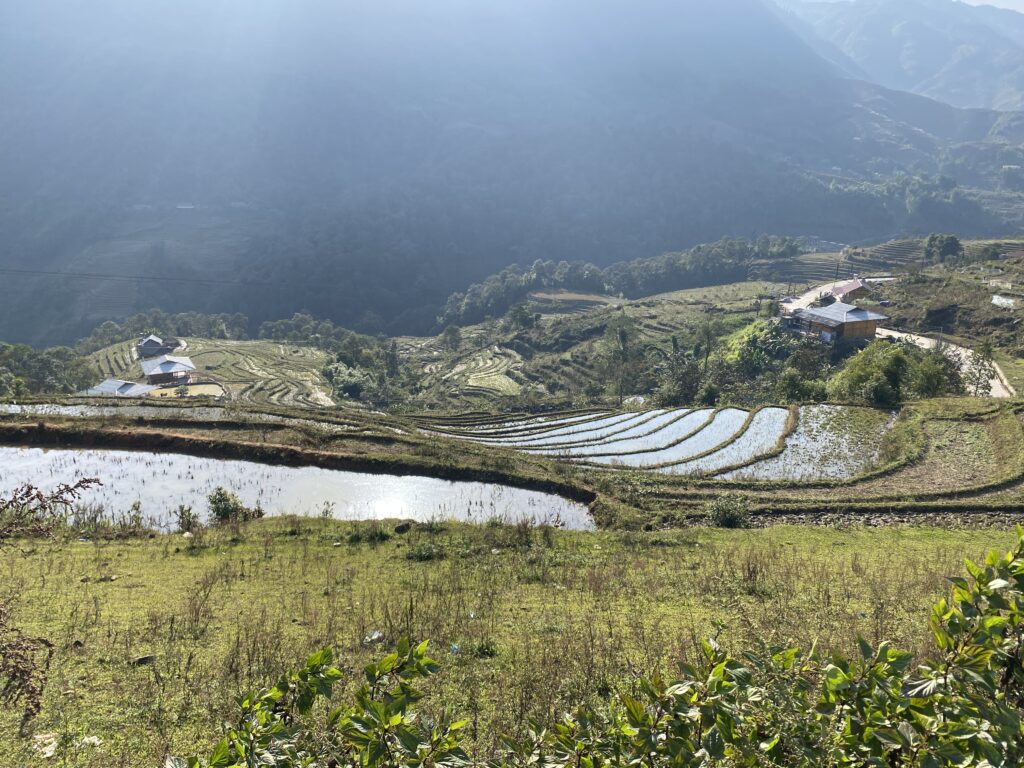
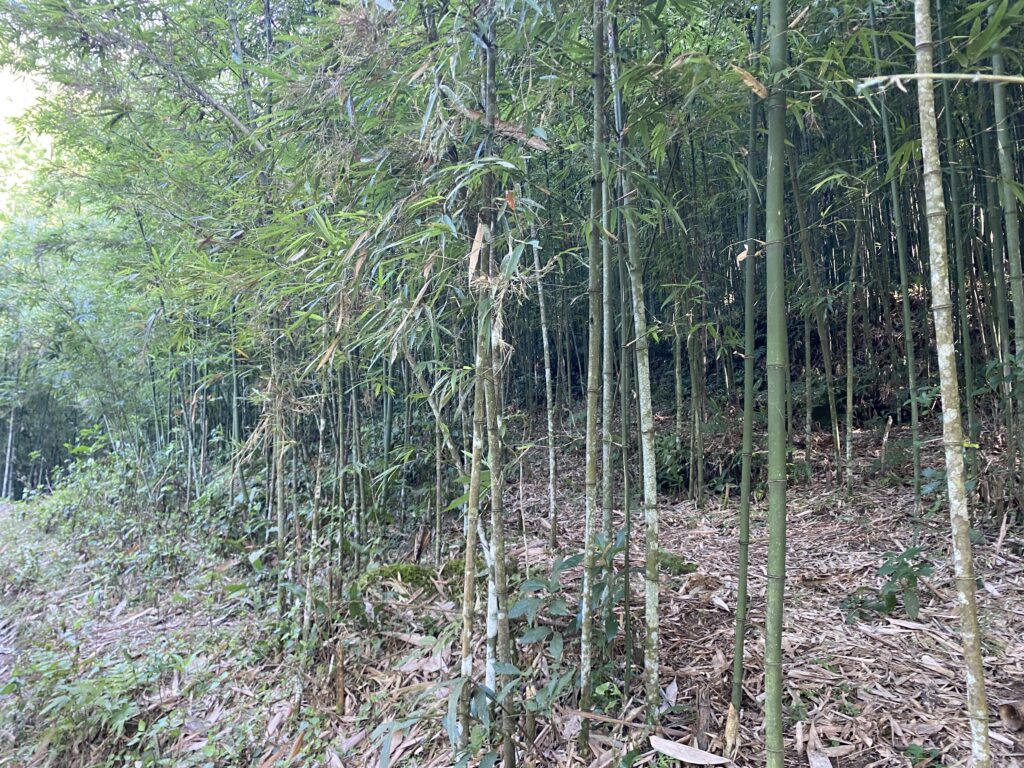

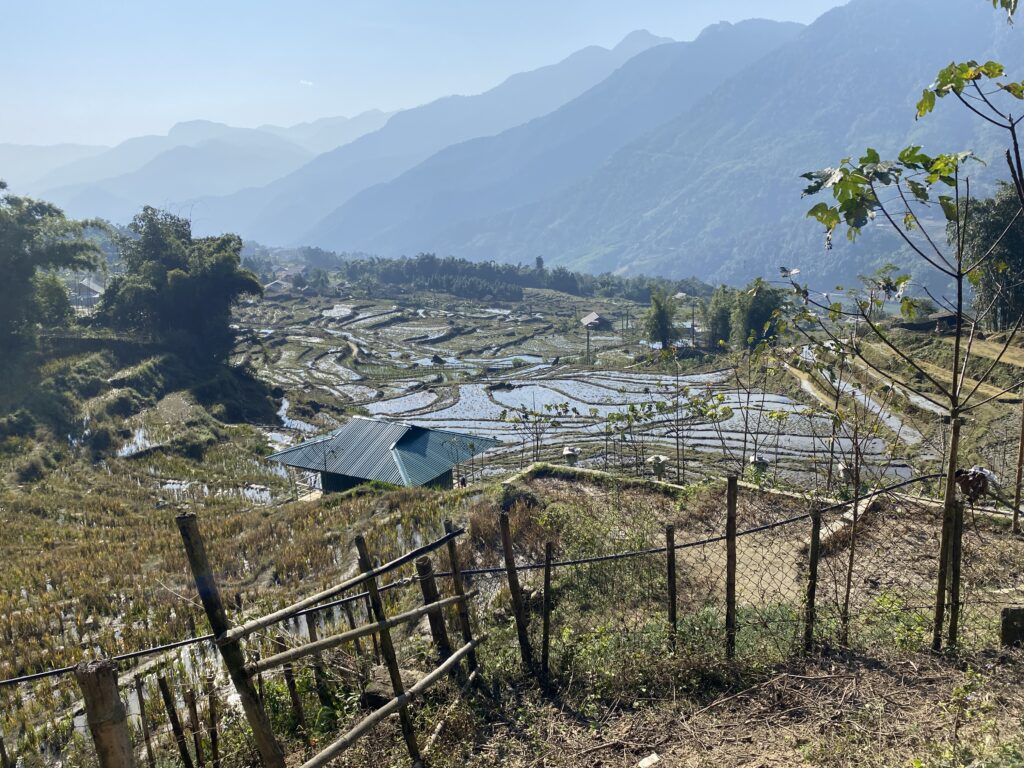
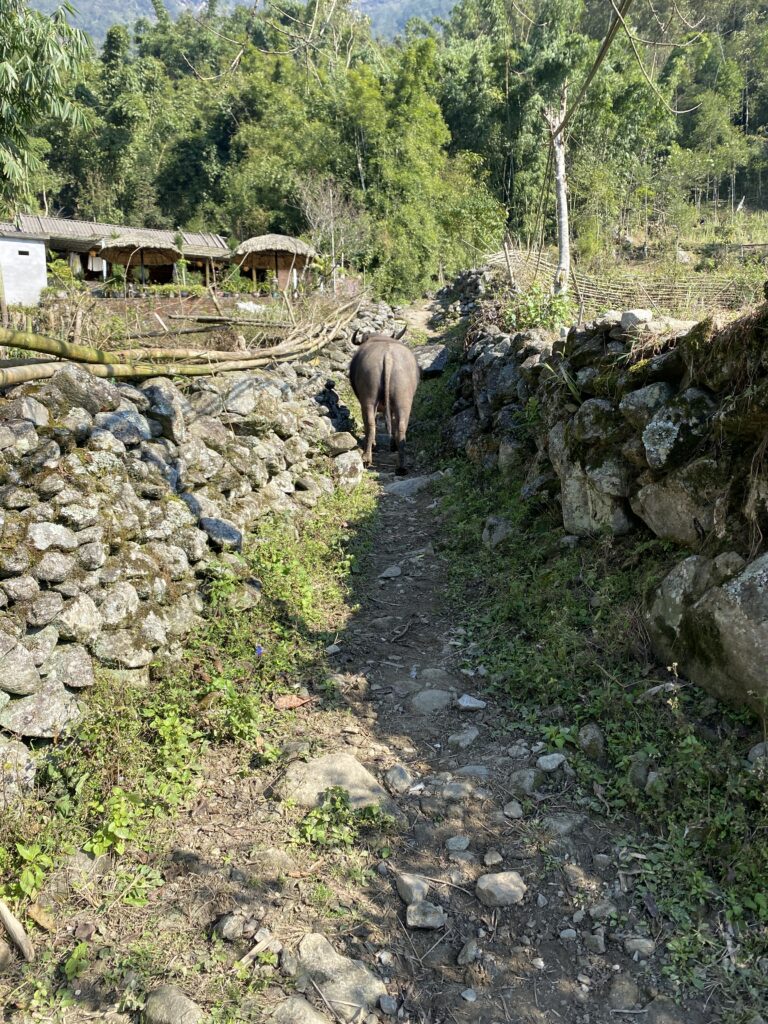
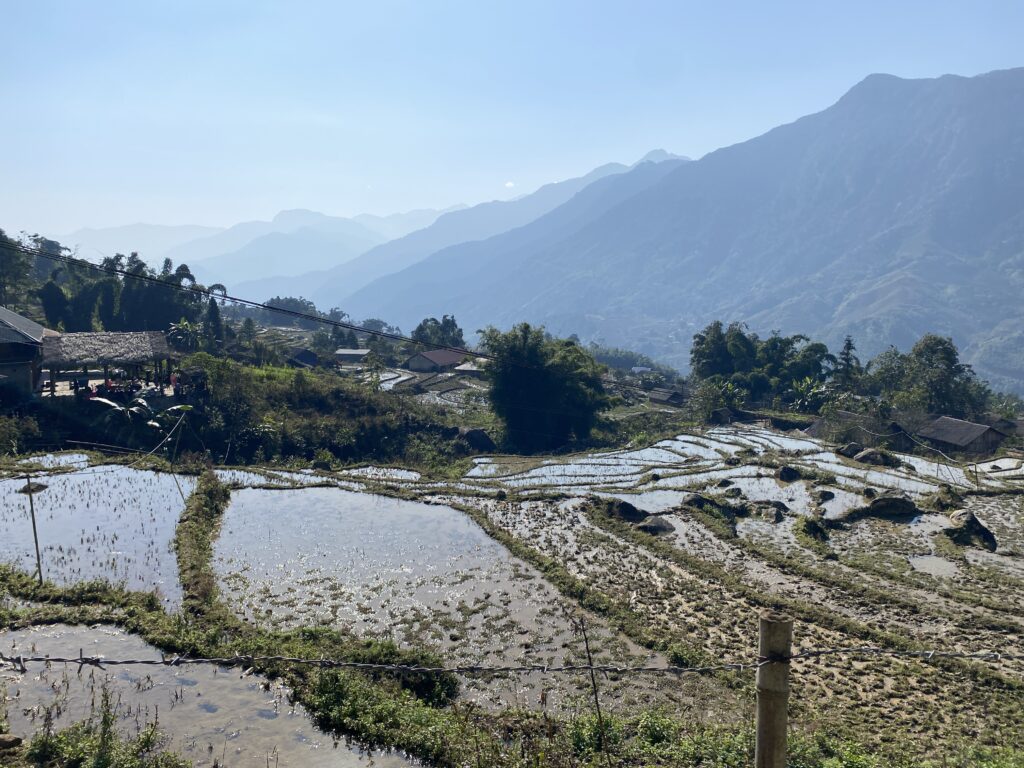
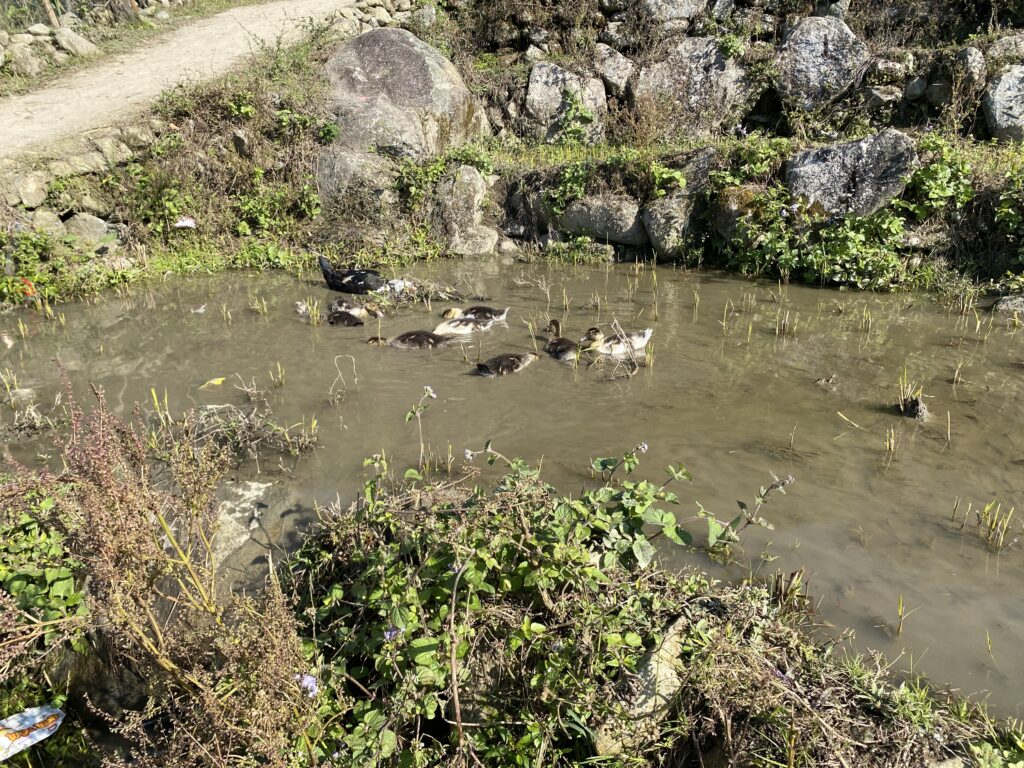
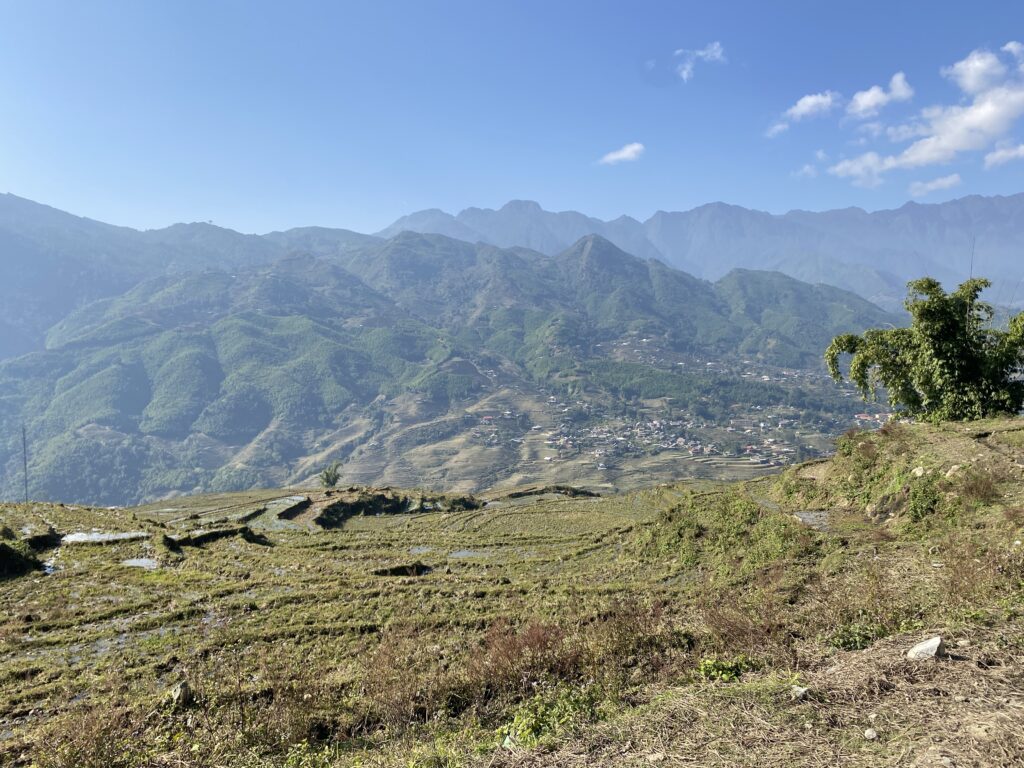
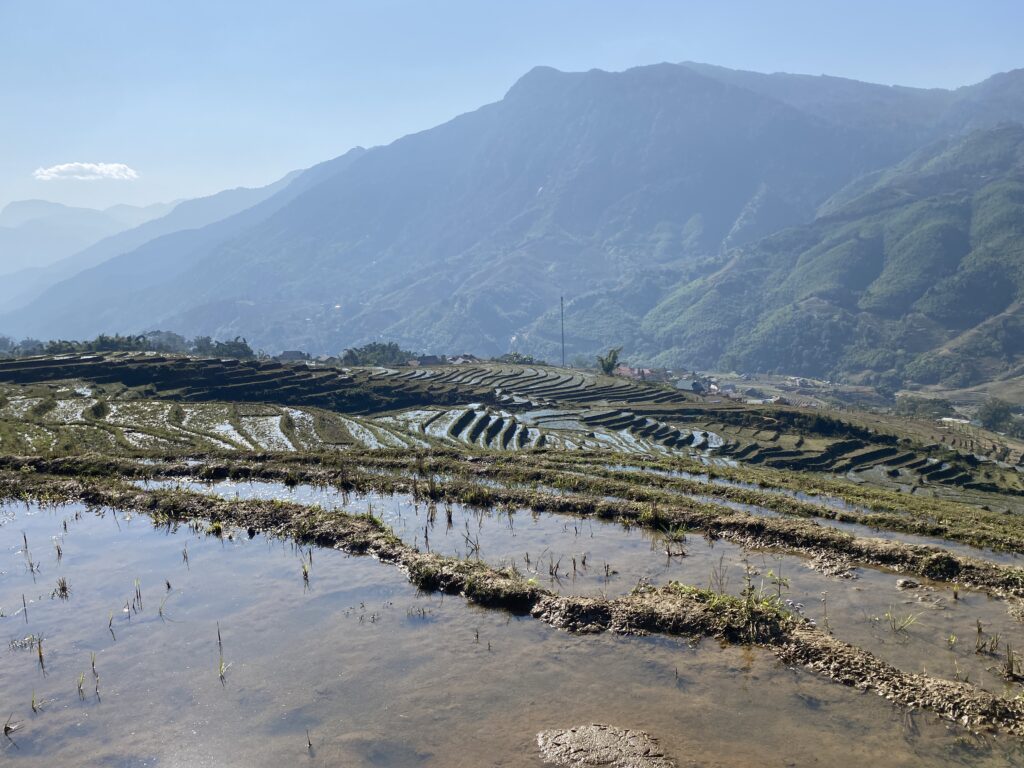
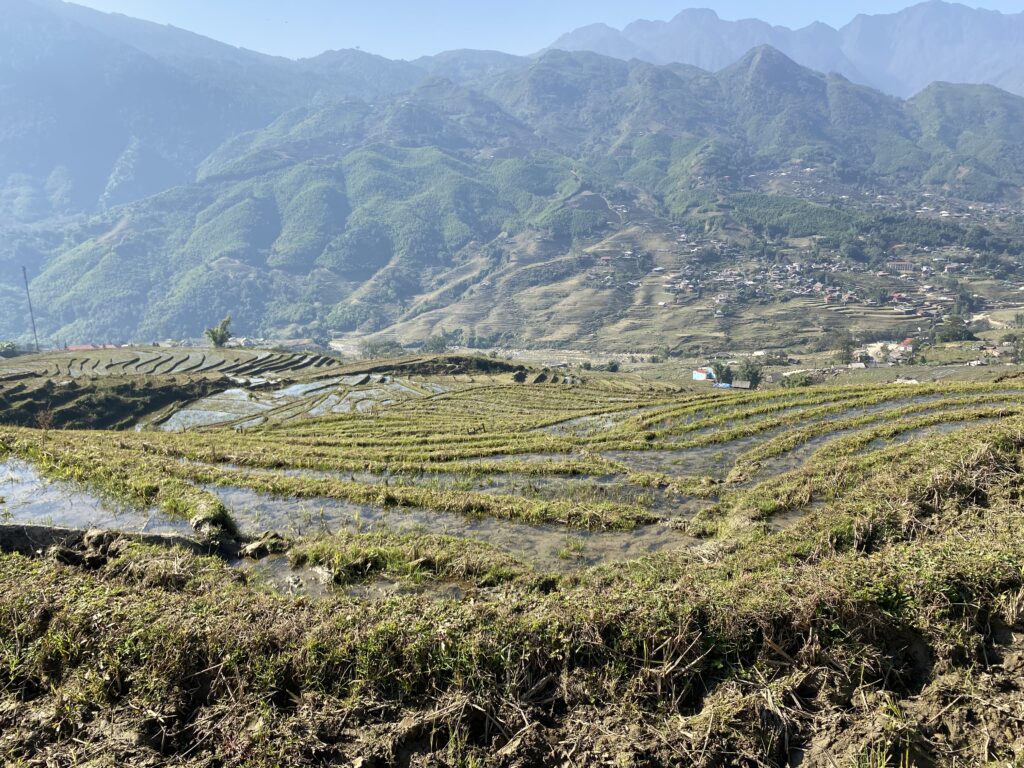
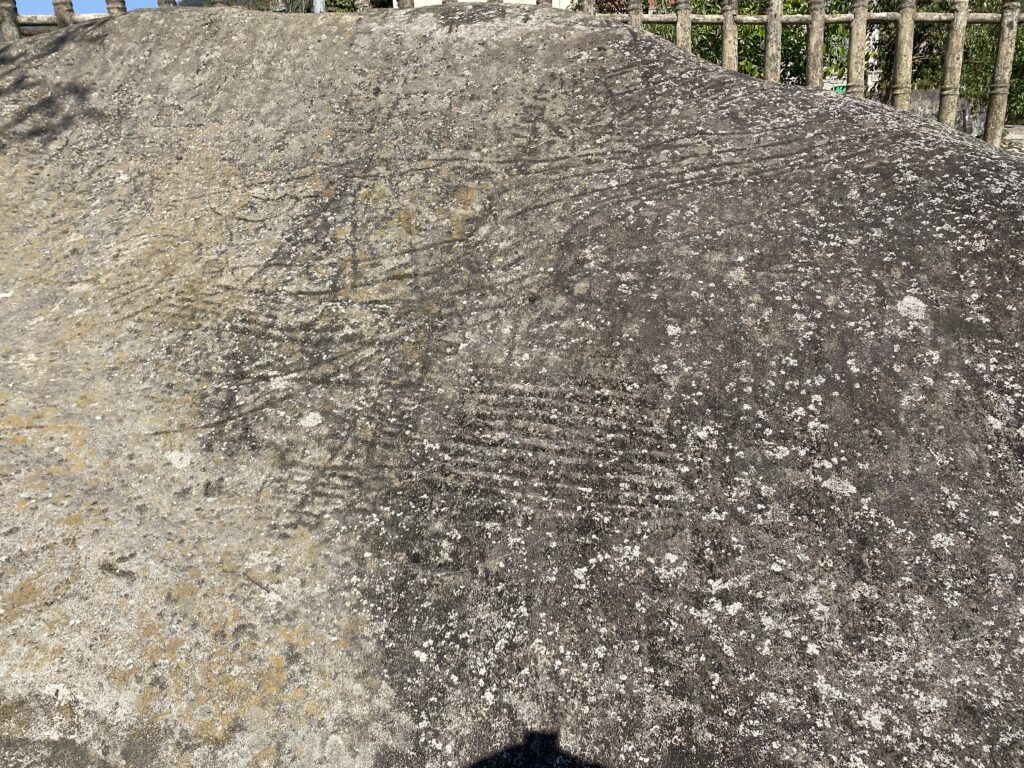

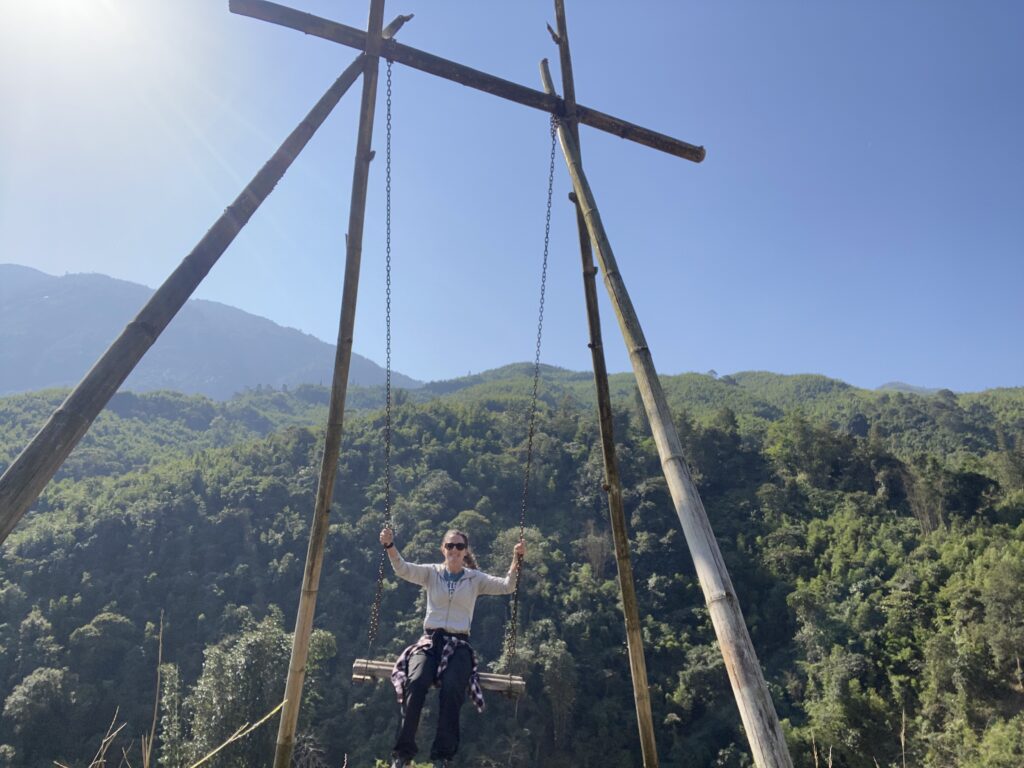
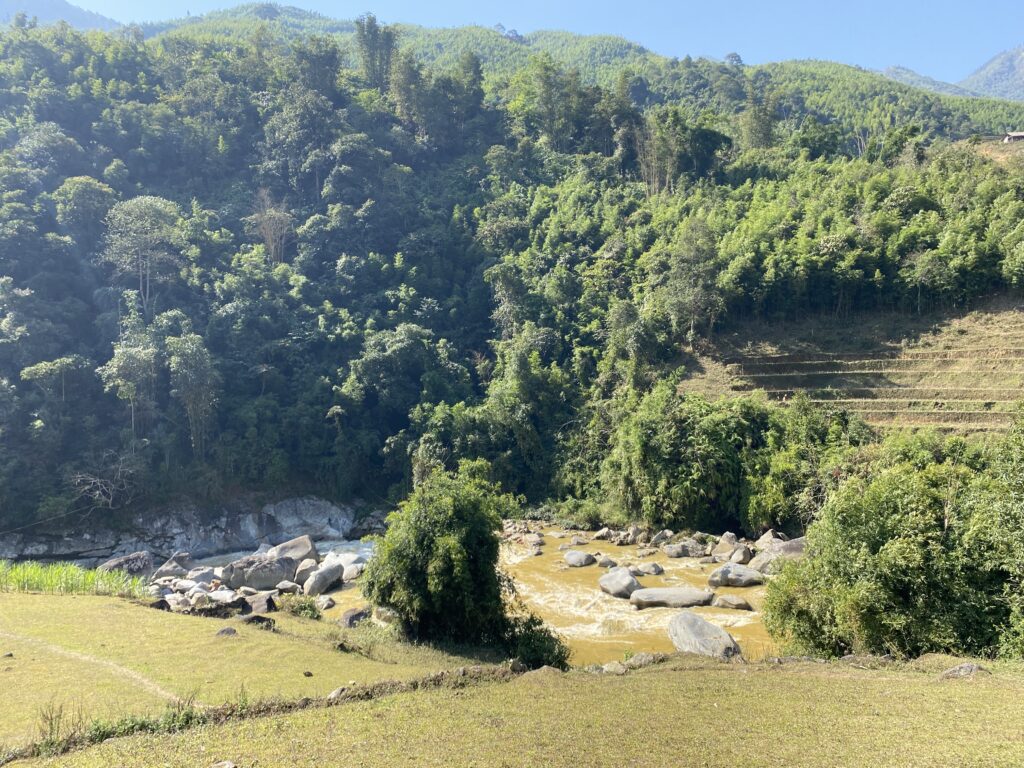
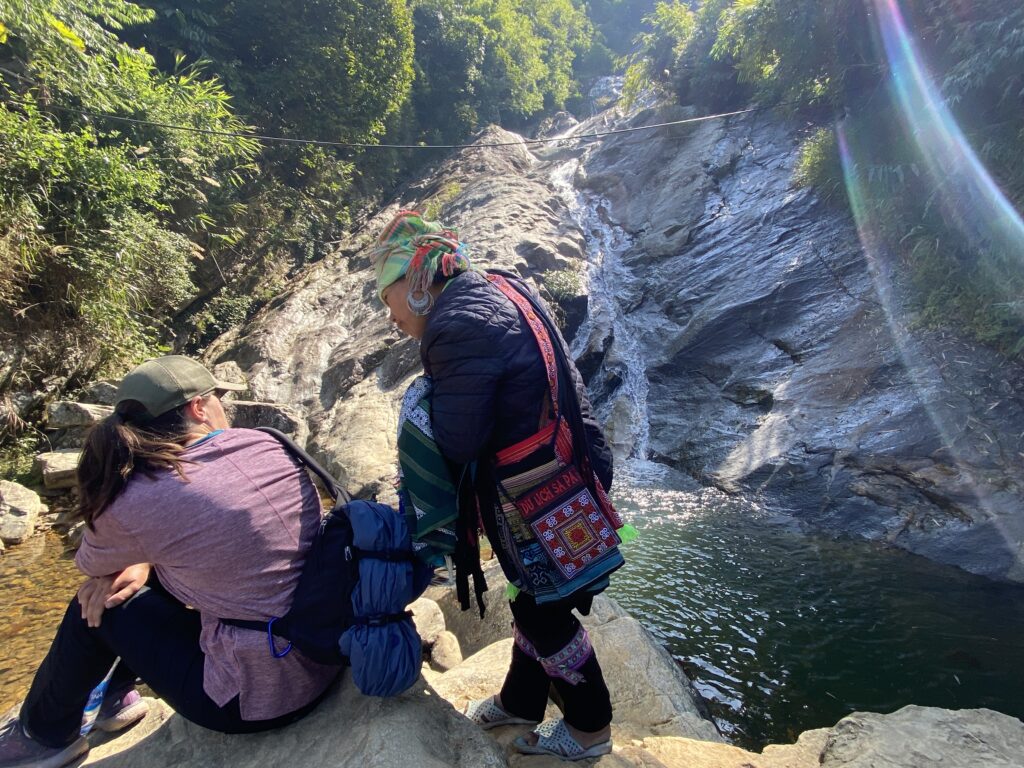
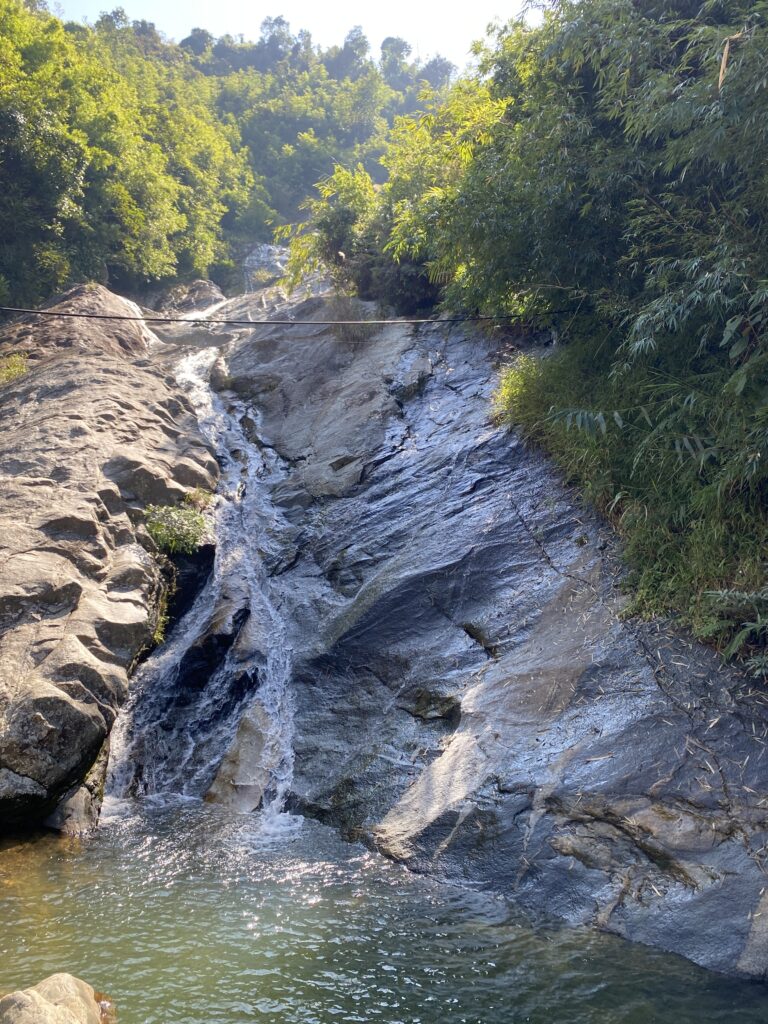
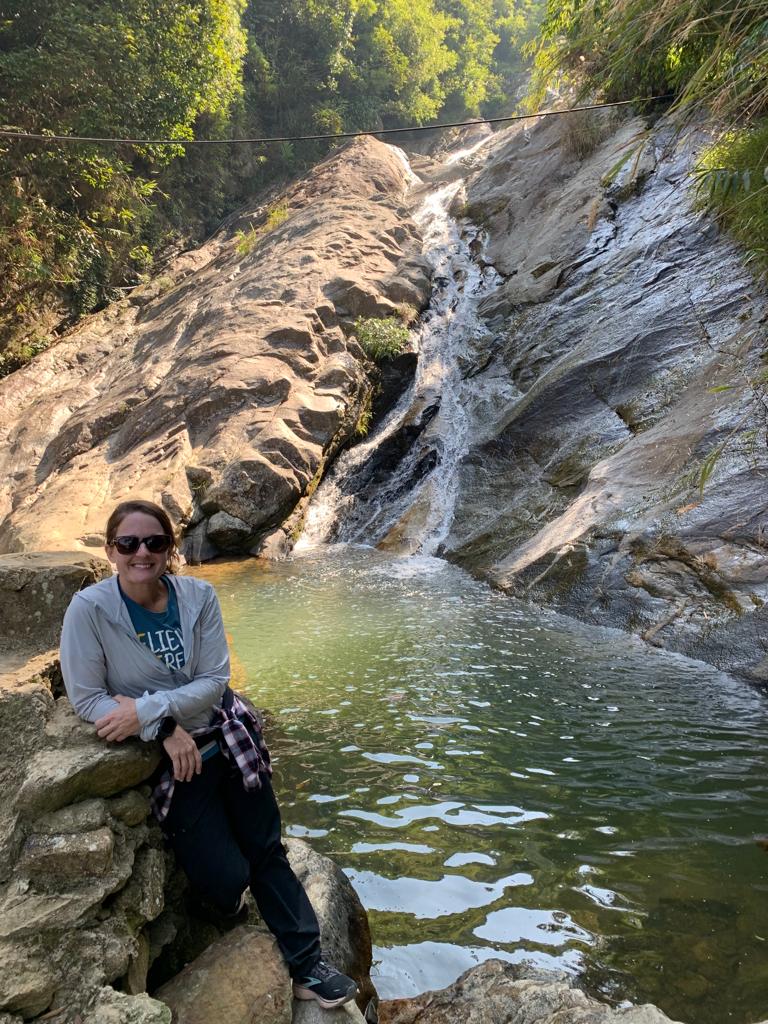
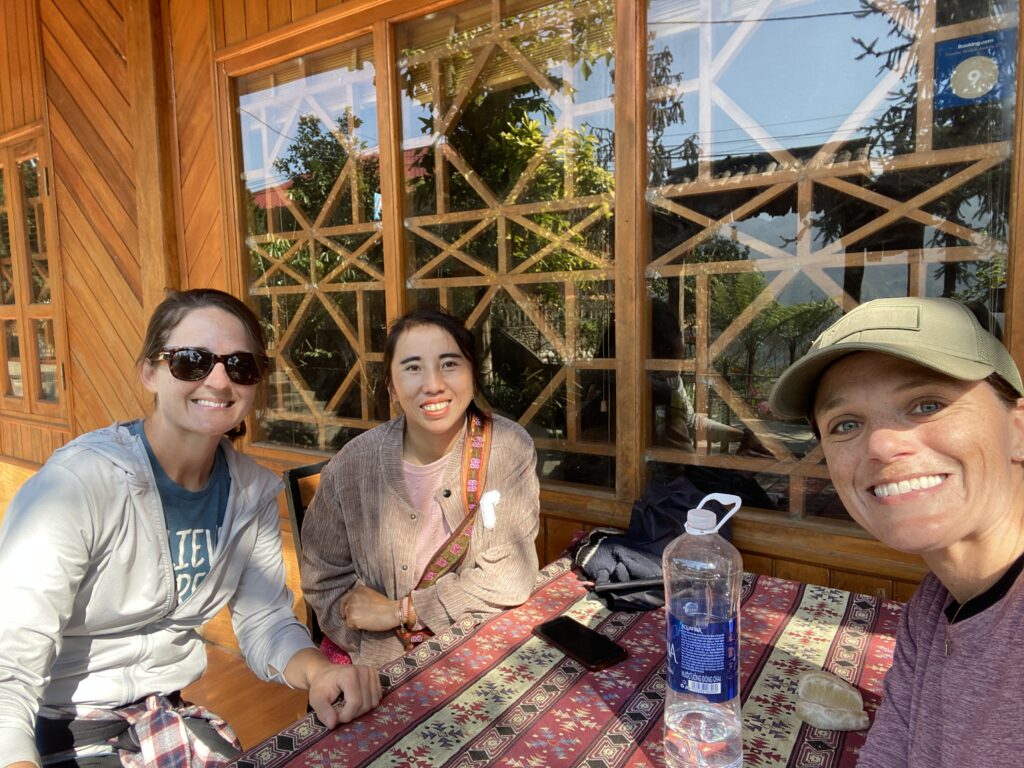
Part of what was so enjoyable about our trek was chatting with Zozo and learning a little about the Hmong culture. Here are some of the key takeaways that I can remember:
- The government pays for education (which often includes boarding) for all primary and secondary schooling. Her daughter has been going to Kindergarten since she was two! (I should note that when I say ‘the government’, I am not sure if she is referring to the Vietnamese government or her own tribal counsel…)
- Traditionally, the girls would marry very young, 14-15 years old, however the government is now requiring that they complete secondary school before they are allowed to marry.
- They often do get a choice in who they marry but not in all cases. She told us how her cousin was being forced to marry someone she didn’t want to, so she drank poison to kill herself. She also said that her boyfriend, now husband, wanted to marry her when she was young but she wasn’t ready, so he had her kidnapped and she was forced to spend three days with his family deciding on whether she wanted to marry him or not. She ultimately chose to do so. Her father had initially wanted her to marry someone else, but when she cried so much, he feared she might end up like her cousin, so he backed off.
- The eldest boy in the family is usually the only one who will receive post-secondary schooling, which the family has to pay for. And, of course, a male child is what all families hope to have. (She has a friend who has 14 daughters because they kept trying and failing to have a boy!)
- There are six different languages spoken in her small village alone.
- Divorce is okay.
- They spent a lot of time in December preparing new clothing for the new year. This includes dyeing clothes with indigo and creating new embroidery for them.
Just a couple more random photos…
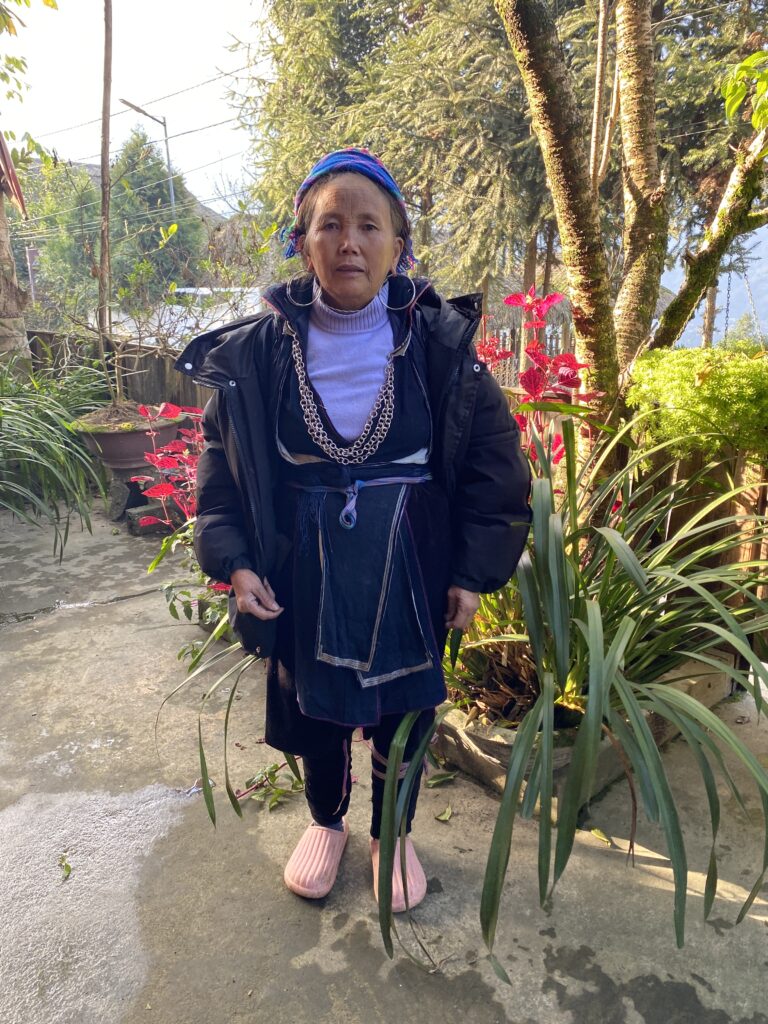
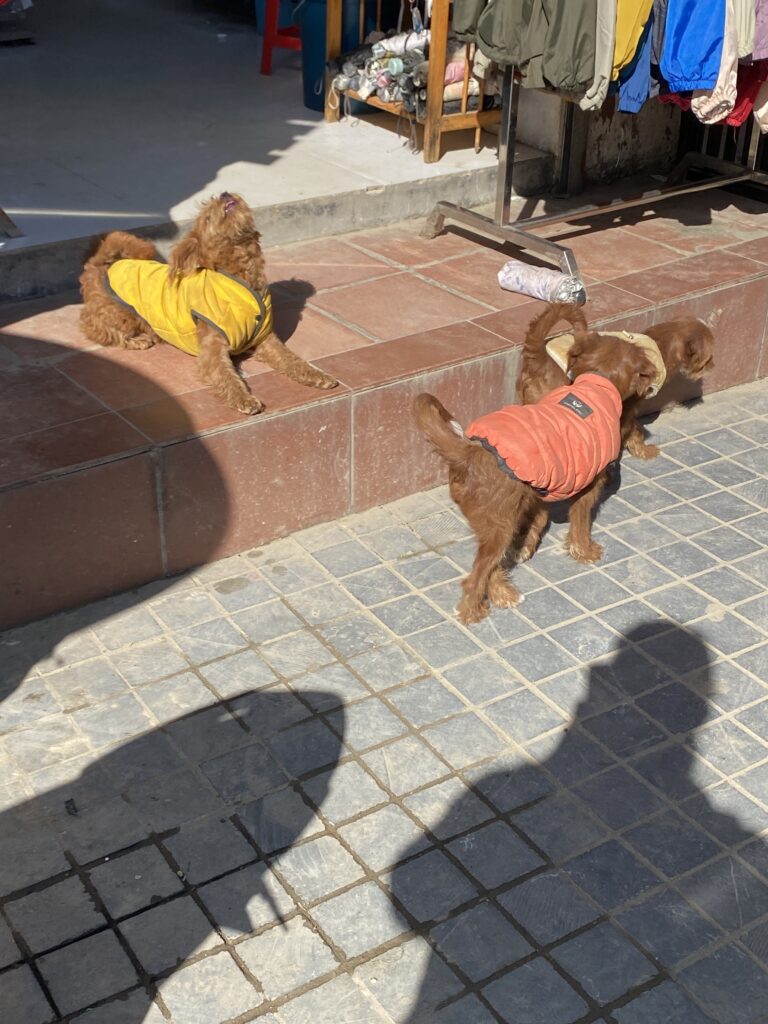
I am so glad we made the stop in Sapa and did not dip out early because it was cold! (I have to remind myself that it won’t be long until the temps are constantly hot and sweaty and I will long to feel the cold air again!)




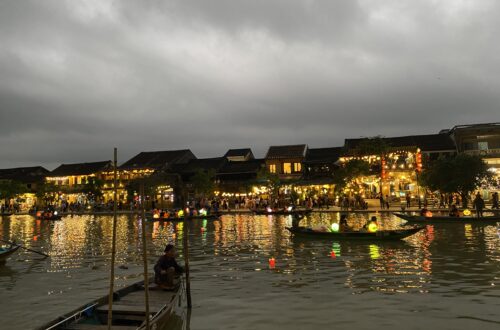
4 Comments
Mary
Amazing!!! Once again. How have you found the families for your home stays? What an awesome experience!
Julie Thompson
The home stay sounds wonderful. You are certainly making the most out of this trip!
adoherty
I found it on Hotels.com!
Julie G Strait
I am glad to see you guys stay and tough it out- homestays are the way to go